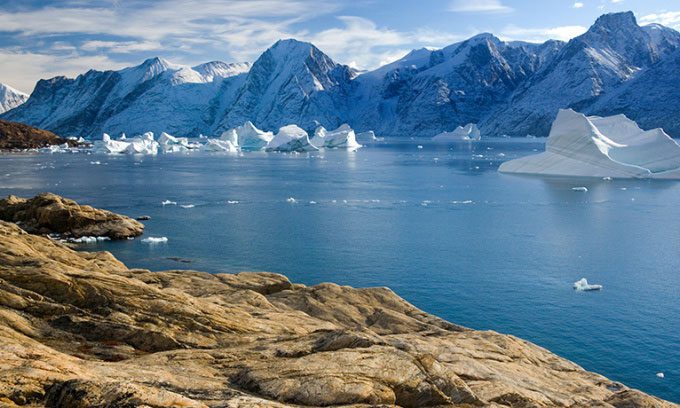The warm, salty waters of the Atlantic Ocean are mixing with the colder, fresher waters of the Arctic Ocean, and Atlantic creatures are invading.
Véronique Merten, a marine ecologist at the GEOMAR Helmholtz Centre for Ocean Research in Kiel, Germany, has observed an “invasion” in the Fram Strait, off the western coast of Greenland, as reported by Smithsonian on June 23.

Greenland is located between the Atlantic Ocean and the Arctic Ocean. (Photo: Steveallen photo/iStock)
While researching the biodiversity of this area using environmental DNA, she discovered capelin fish. These small creatures typically inhabit the northern Atlantic and Pacific Oceans. However, they have now been found in the Fram Strait of the Arctic Ocean, approximately 400 kilometers from their usual habitat.
Capelin are enthusiastic invaders, according to Merten. As ocean conditions change, they can easily expand their range.
It is very difficult to estimate the population of a species based solely on the amount of their DNA in the water. However, in Merten’s study samples, capelin were the most abundant species, outnumbering typical Arctic fish such as Greenland halibut and Arctic rays. For Merten, the large number of capelin appearing in the north is a clear sign of a concerning phenomenon in the Arctic: Atlanticization.
The Arctic is warming rapidly – the Fram Strait is nearly 2 degrees Celsius warmer than it was in 1900. However, Atlanticization is not just about rising temperatures; it involves changes in the physical and chemical conditions of the Arctic Ocean.
According to ocean circulation patterns, water regularly flows from the Atlantic into the Arctic. This exchange mainly occurs in deeper waters, with currents carrying warm, relatively salty Atlantic water northward. This warm Atlantic water does not mix well with the surface waters of the Arctic, which are relatively cool and fresh. Fresher water is less dense than saltier water, so Arctic water tends to rise to the surface while the saltier Atlantic water sinks below.
However, as sea ice melts, the surface of the Arctic Ocean becomes warmer. The barrier between the water layers gradually disappears, allowing Atlantic water to mix more easily with the upper layer. The warmer surface water continues to melt more sea ice, exposing greater areas of the ocean’s surface to sunlight, which further warms the water. This is the process of Atlanticization in the Arctic Ocean.
In addition to finding large numbers of capelin in the Fram Strait, Merten also detected DNA from other Atlantic species such as tuna and Histioteuthis squid. This evidence suggests that the process of Atlanticization is occurring rapidly and could have significant consequences.
A long-term study in the Barents Sea off the coast of Russia painted a grim picture of how Atlanticization could disrupt Arctic ecosystems. According to lead researcher Maria Fossheim, an ecologist at the Institute of Marine Research in Norway, as the Barents Sea becomes warmer and saltier, Atlantic species have moved in to invade. Fish populations in the Barents Sea have moved 160 kilometers northward in just nine years. By 2012, at the end of the study period, Fossheim found that Atlantic species had spread throughout the Barents Sea, outcompeting Arctic species.


















































